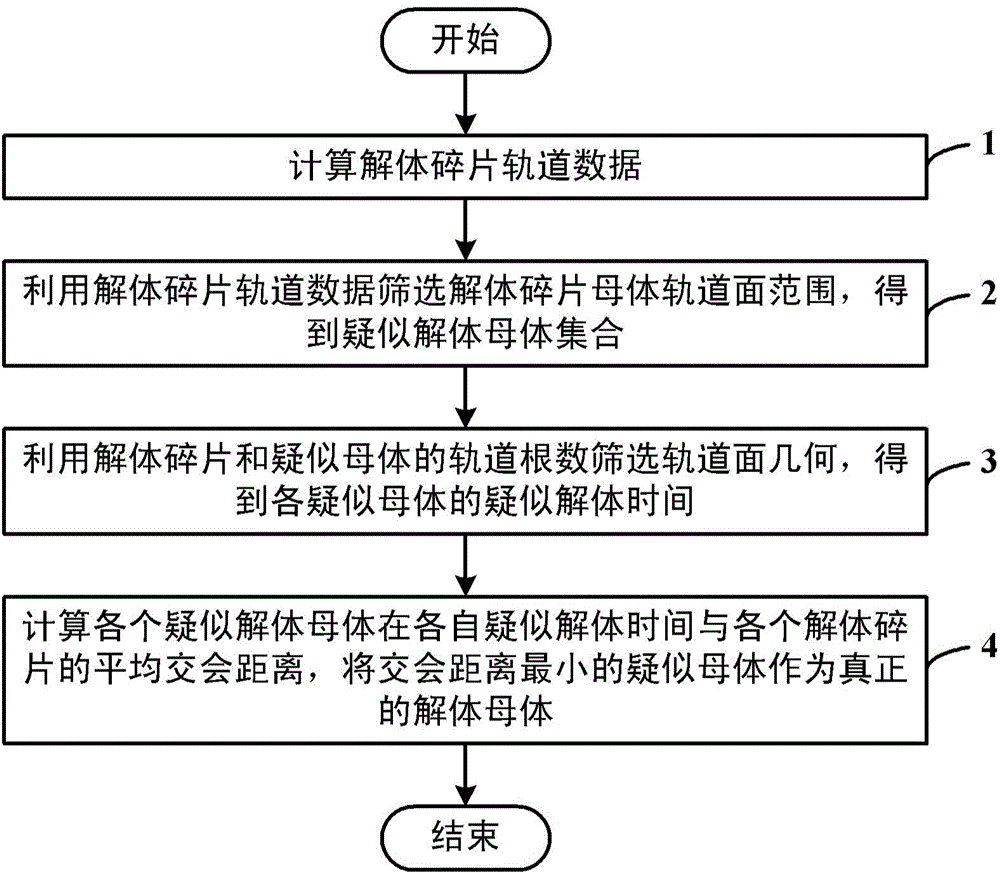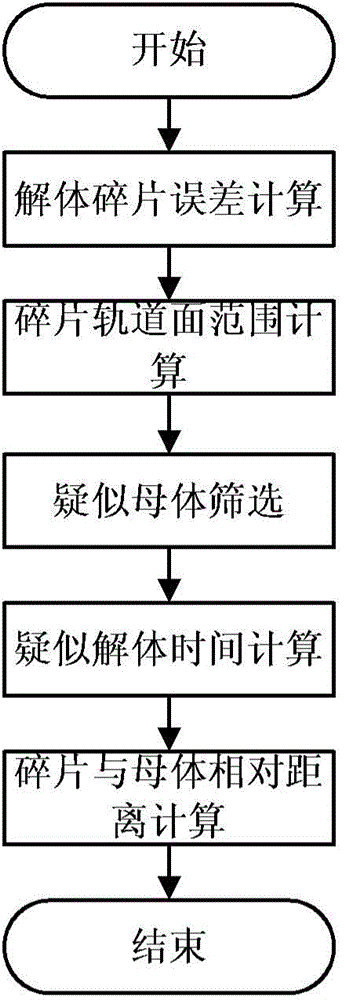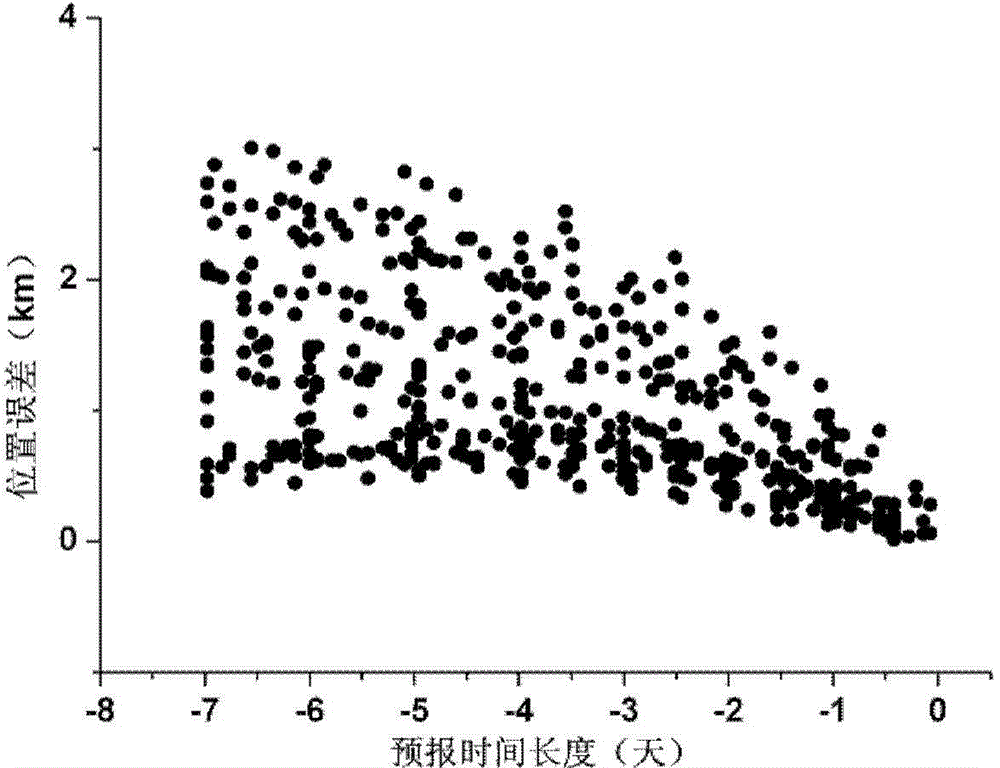Orbit-data-based breakup debris source identification method
A technology for disintegrating debris and orbital data, applied in electrical digital data processing, special data processing applications, instruments, etc., and can solve the problems of non-disclosure, leading position, few papers, and different
- Summary
- Abstract
- Description
- Claims
- Application Information
AI Technical Summary
Problems solved by technology
Method used
Image
Examples
Embodiment
[0039] This embodiment adopts the analysis of 8 Iridium 33 disintegration fragments that occurred on February 10, 2009, and uses the method provided by the present invention to find the fragment parent from all 11,990 cataloged objects, and verifies the present invention to illustrate its specific implementation. The target orbit data used are all from the TLE files downloaded from the Internet.
[0040] like figure 2 as shown, figure 2 It is a process flow chart of identifying the source of disintegrated debris based on orbital data according to an embodiment of the present invention, and the method includes the following steps:
[0041] (1) Calculation of disintegration fragment data error. Using the orbital data of each fragment from February 10th to April 1st, calculate the position error of each fragment inversely for 7 days, fit the second degree polynomial coefficient and position error, see Table 1.
[0042] Table 1 Fitting table of position error of disintegrated...
PUM
 Login to View More
Login to View More Abstract
Description
Claims
Application Information
 Login to View More
Login to View More - R&D
- Intellectual Property
- Life Sciences
- Materials
- Tech Scout
- Unparalleled Data Quality
- Higher Quality Content
- 60% Fewer Hallucinations
Browse by: Latest US Patents, China's latest patents, Technical Efficacy Thesaurus, Application Domain, Technology Topic, Popular Technical Reports.
© 2025 PatSnap. All rights reserved.Legal|Privacy policy|Modern Slavery Act Transparency Statement|Sitemap|About US| Contact US: help@patsnap.com



